Creating a Monthly Compendium of Prayer & Virtue
How my journaling system has evolved into a process for tracking habits, reflection, Scripture, and prayer intentions.
For as long as I can remember, I’ve been obsessed with a fresh notebook.
I think I get this love from my mother. I remember picking up her notebooks around the house and reading the random quotes she collected through the years. I didn’t understand why she did that back then, but it always piqued my interest.
I’ve since learned that this practice of gathering meaningful words, ideas and reflections is called keeping a commonplace book.
Over the years, my own notebooks have served a similar purpose. I’ve used them to jot down notes, ideas, and prayers—sometimes as a brain dump, other times as a quiet space to process what God was teaching me in prayer (a sort of spiritual commonplace).
Over time, this rhythm of prayer and reflection became something deeper. Now, it’s more of a compendium of prayer, reflections, and patterns of growth in virtue.
This system works well for me because I love new beginnings. Advent, New Year’s, and Lent are some of my favorite times of the year, since they are seasons that invite reflection, as well as growth and change.
In the same way, my journaling system welcomes a small reset each month. It’s a chance for me to re-evaluate, take stock, and begin again.
At the start of each month, I create new prayer intentions, habit trackers and continue to make space for prayer and meditation on God’s Word. Then, each day, I invite the Holy Spirit into the time I sit down with my journal. It’s become my greatest tool for reflection and the pursuit of living an intentional life.
The purpose of my journal isn’t for it to become a diary or even a list to check off. It has become, instead, my meeting place with the Lord and the main way I organize and record the small graces that unfold in my ordinary daily living.
Today, I am sharing this very personal journaling ecosystem with you and how you can begin creating your own.
Addressing the Aesthetics
I’ve learned that, for me, the aesthetics really matter. I’ve cycled through many pens and notebooks over the years, but these are my favorites:
For years, I used a Moleskine journal. I loved its thick paper and sturdy feel. Since my journal often lives on the coffee table, it has to be hearty and able to withstand occasional spills, being tossed in my purse, or a child throwing it across the room.
Recently, I discovered the Paperage notebook. It is a more affordable alternative that feels similar in weight and sturdiness. It also includes colored tabs and labels, which I love. I purchase the thick version (lined 252 pages).
For pens, I swear by the black erasable .5 or .7 Frixion pen by Pilot. It erases beautifully and I never have to worry about messy cross-outs.
I also find it important to have a gathering space for all my essentials. I keep a small bucket by my chair where I store my pens, Bible, rosary, journal, and meditation books. (Having to pause to find your materials can interrupt prayer’s momentum, so it’s worth giving them a permanent home.)
With that said, this system doesn’t have to be perfect to be holy. Work with what you have and what you love—even if it’s just a simple spiral notebook.
Diving In
On the Cover: Opening Prayer
Once I’ve chosen my notebook and gathered my materials, I turn to the setup itself.
When creating a new volume (which typically holds three months’ worth of notes, prayers, and intentions), I always write an opening prayer on the cover. This helps me settle into the right frame of mind when I sit down to pray, drawing me immediately into the presence of Christ. I don’t need to search for words; I simply open the cover and begin to pray.
My current notebook opens with a simple prayer written by St. Jose Maria Escriva:
“May the most just and most lovable will of God be done, be fulfilled be praised and eternally exalted above all things. Amen.”
I’ve also opened my covers with this prayer before meditation (though I now have it memorized). You can choose whatever opening prayer you’d like!
1st Tab: Upcoming Events (2 Pages)
After the cover page is complete, I begin building the framework of my month.
At the start of the month, I create a simple calendar list, numbering the days vertically. I leave space to write down any important events or dates I want to remember for the month. I also create a simple month-at-a-glance.
This helps me track events week by week in an easy to manage way.
It’s meant to be an overview, making it easier for me to stay rooted in prayer. Rather than having my mind always wandering back to my calendar, I can quickly see what’s coming up throughout the week, address it, and move on.
2nd Tab: Story-Worthy Moments & Daily Habit Tracker (2 pages)
Each morning, I reflect on the day before and write down one story-worthy moment.
This simple habit helps me notice the small, beautiful things I might otherwise forget and helps me cultivate gratitude. Life moves fast, but this practice slows it down long enough to remember the gifts found in ordinary days.
It’s so fun looking back to see all the ways God has blessed my life at the end of the month!
On the same page, I create a grid of vertical lines where I track certain habits I want to cultivate.
I learned about the benefits of habit tracking from this video. Anything from taking daily walks to limiting phone use or reading more—all the habits I want to cultivate for the month live here.
I’ve learned that tracking these habits helps me see the different patterns that are within my life. It’s become an important tool for me, because instead of just imagining the kind of person I want to become, I can see—day by day—how I am actually growing into that person, and how I am not.
Habits do not lie.
Tracking them daily is a helpful tool to really evaluate where your priorities are in life.
On this page I also mark important priorities for things like: Confession, 1st Saturday Mass, and special feast days I want to celebrate throughout the month.
3rd Tab: Prayer Intentions (4 pages)
This next section is where I pour out my prayers for those God has placed in my life, returning daily to these intentions.
If you want to grow in your life of prayer—especially in the gift of intercession—try writing down your intentions each month. For me, it’s become a tangible and sacred practice.
At the beginning of the month, I sit and record my prayer intentions for the following categories: spouse, children, family, friends, community, the Universal Church, the nation and the world.
These intentions look similar each month, but they change based on needs and circumstances.
Taking the time to do this on a monthly basis helps me to recall the prayers I have in my heart for those I love and the things I hope for.
This has brought a deeper level of intentionality to my prayer. Rather than scrambling to remember these intentions each day, they’re right there for me waiting to be prayed over.
In this section, I also dedicate a page to write down answered prayers (a visual reminder that God hears us and answers) and space to pray for specific virtues I’d like to see each of my children grow in. Since developing this habit, I’ve become more aware of the ways I can help my children grow, and aware of how God is moving in their hearts and minds.
The best book I’ve found on virtue building is The Virtue Field Guide, by Disciple of Christ. This Handbook is intended for teens/young adults, but it was exactly what I was looking for when seeking to grow in personal virtue and pray for my kids. (I cannot believe that there aren’t more books like this out there!) Not only is it beautiful, but it includes descriptions of each virtue, prayers, dedicated saints, and journaling prompts for so many different virtues.
4th Tab: Cultivating Virtue (2 Pages)
Just as I pray for my kids to grow in virtue, I pray for this myself.
I dedicate the next tab for my own personal growth, picking a specific virtue and praying over it each month. Using the Field Guide, I read about that specific virtue, write down the prayer, saint, and intentions for the month. (For example, last month I focused my efforts on growth in the virtue of Magnanimity.)
The foundation of a life of prayer is growth in virtue. If we are not actively trying to grow in virtue and embracing this in our lives, we will have a more difficult time becoming the people God created us to be. Praying over this each day helps me put in the effort needed to grow. (A lifelong journey for me, as I am very much a work in progress…)
In this section, I also write down specific goals and ambitions I have. From writing more letters to friends, to making an effort to invite people over for dinners…this little section helps me to go outside of myself for the month.
5th Tab: Brain Dump (3 Pages)
In this fifth section, I create a “brain dump” area. This is the perfect place to offload any of the random things on my to-do list or schedule that pop up in my head before or during prayer. It’s easy to become distracted by these things. Having a place to release these random thoughts makes prayer time more intentional and keeps your mind clear.
When you “dump” those things into one location, it’s also easier to put them on your calendar later in the day or cross them off as you go.
Daily Prayer
Each day, I open to a clean page, date it, and write down any special intentions.
Then I read the daily readings, pray the rosary, and meditate with In Conversation with God. This is the heart of my time with the Lord. As I pray, I jot down quotes or thoughts I want to savor.
This practice is slow and meditative and takes me anywhere from thirty minutes to an hour.
Each page and prayer is a small step in sanctifying ordinary life—a daily compendium of grace. It’s less about what I write, and more about Who I meet there…and who I am becoming.
Back Cover
On the back of the book, I write my closing prayer for each day.
My current prayer is St. Therese’s Morning Offering:
O my God! I offer Thee all my actions of this day for the intentions and for the glory of the Sacred Heart of Jesus. I desire to sanctify every beat of my heart, my every thought, my simplest works, by uniting them to Its infinite merits; and I wish to make reparation for my sins by casting them into the furnace of Its Merciful Love.
O my God! I ask of Thee for myself and for those whom I hold dear, the grace to fulfill perfectly Thy Holy Will, to accept for love of Thee the joys and sorrows of this passing life, so that we may one day be united together in heaven for all Eternity.
Amen.
A compendium like this isn’t about organization for its own sake.
It’s about cultivating awareness of God’s presence in the smallest corners of daily life.
Whether I have a lot of time or little, this practice helps me return to what matters most: prayer, presence, and the gradual sanctification of ordinary life.
I’d love to know if you have a system that already works for you!
What tools, notebooks, and pens do you like to use?
Do you like praying with a journal in hand, or are you more of a wholly mental prayer kind of person?
Share any thoughts and experiences you have below! I’d love to hear about your system if you have one!


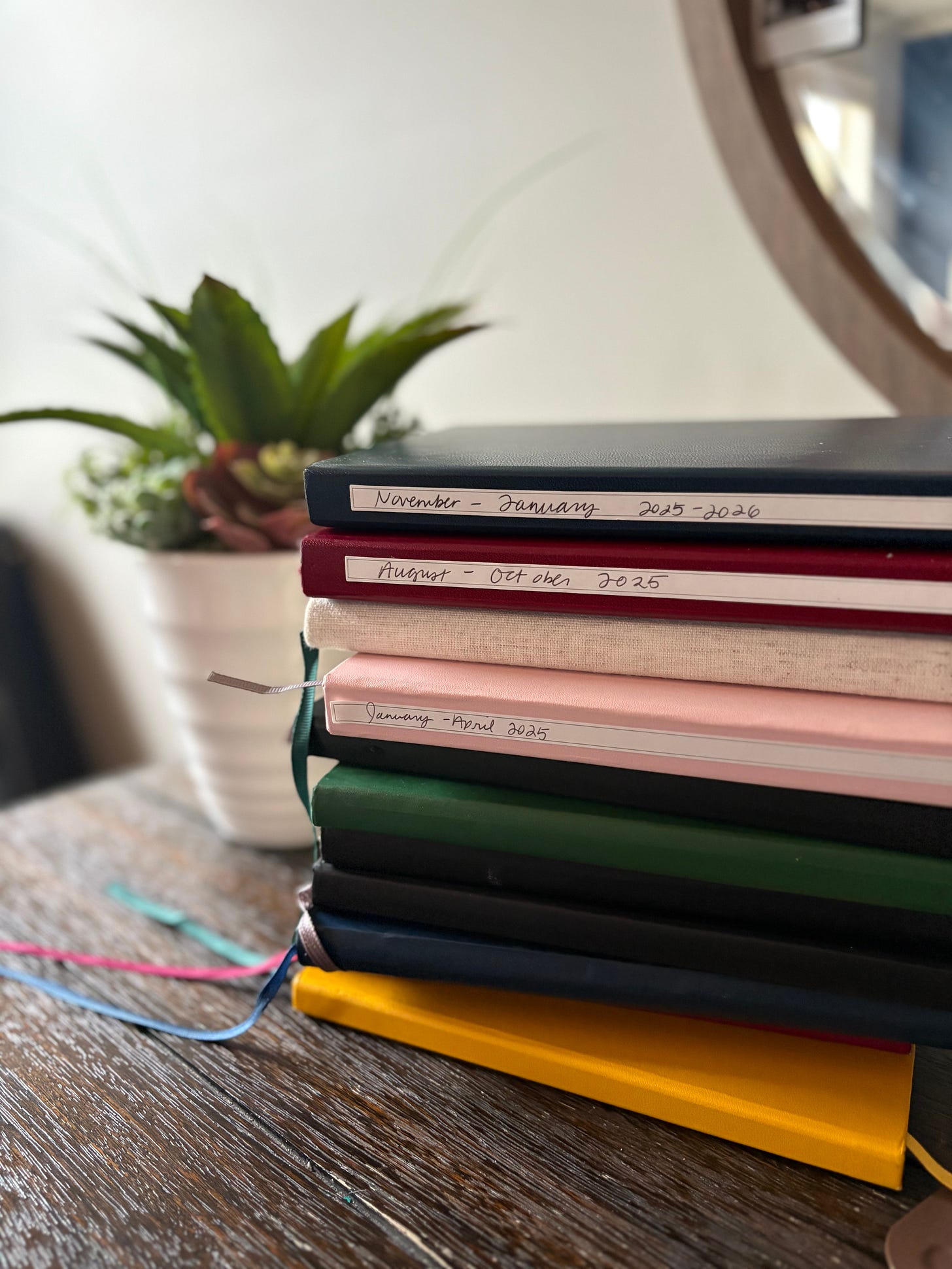

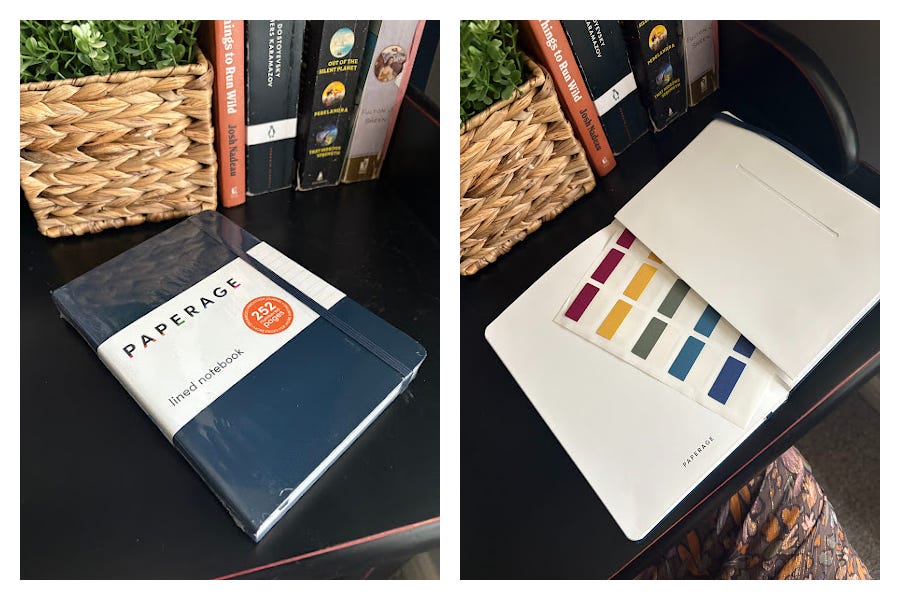

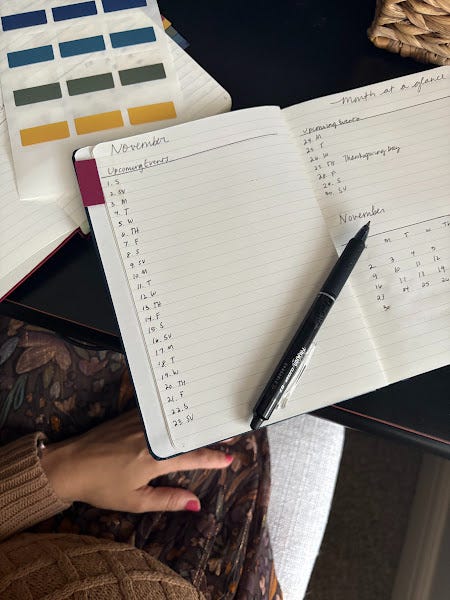

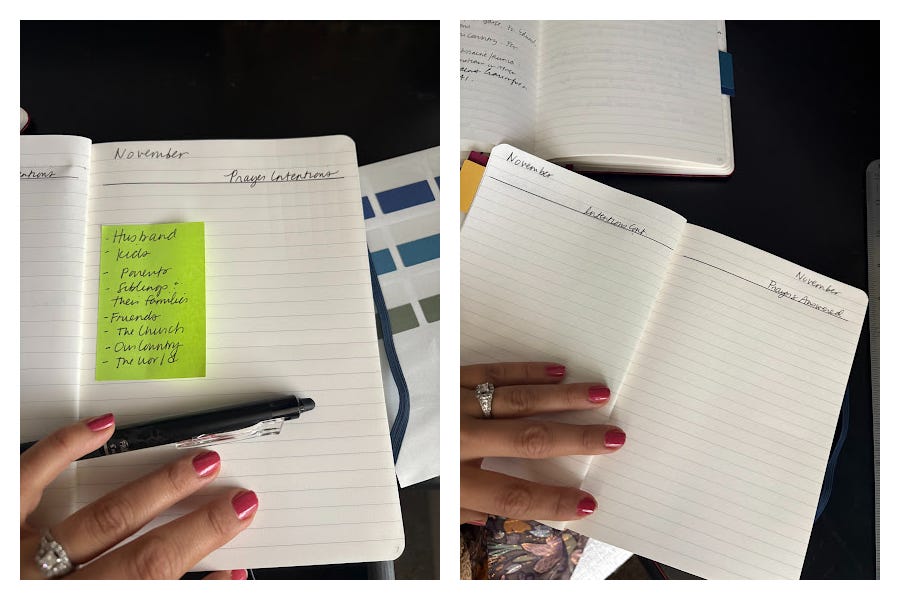
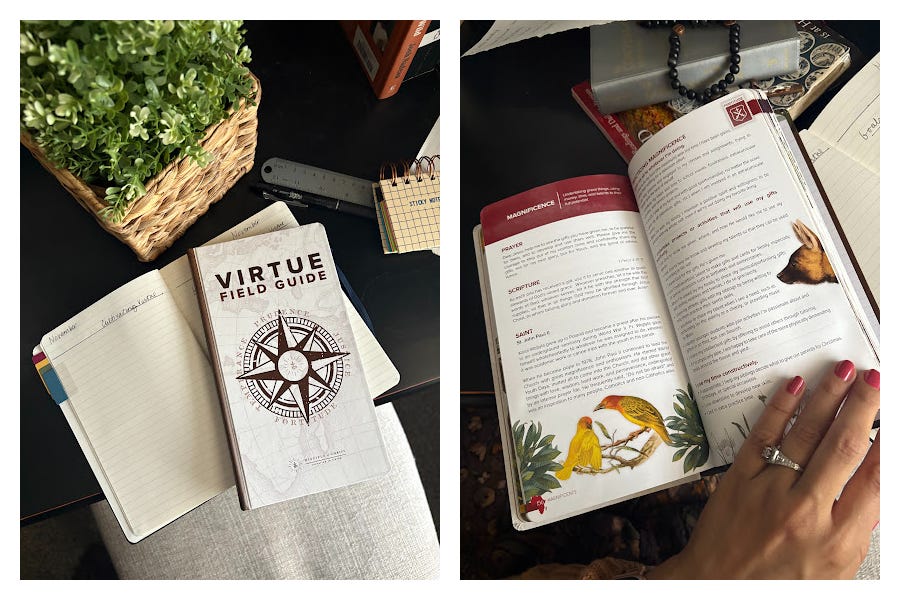
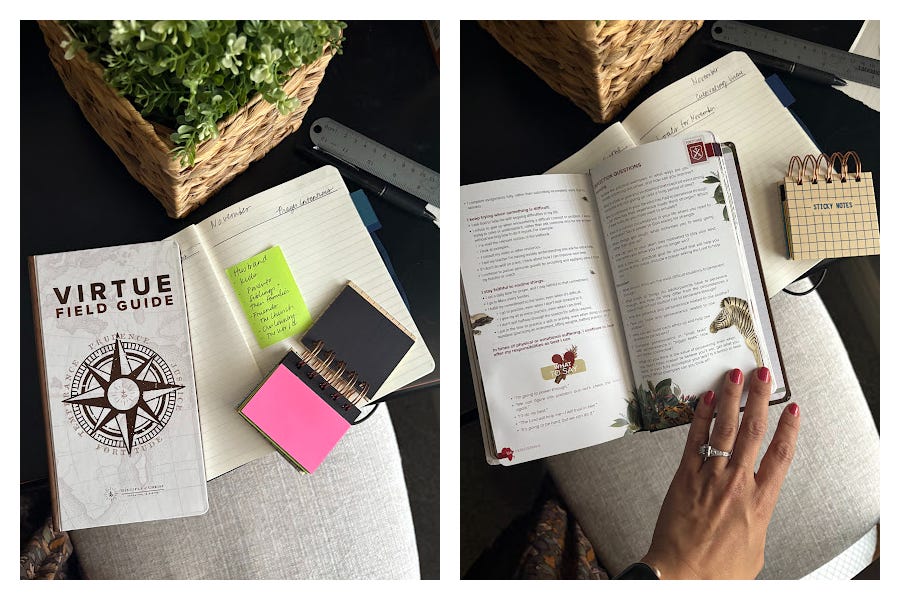
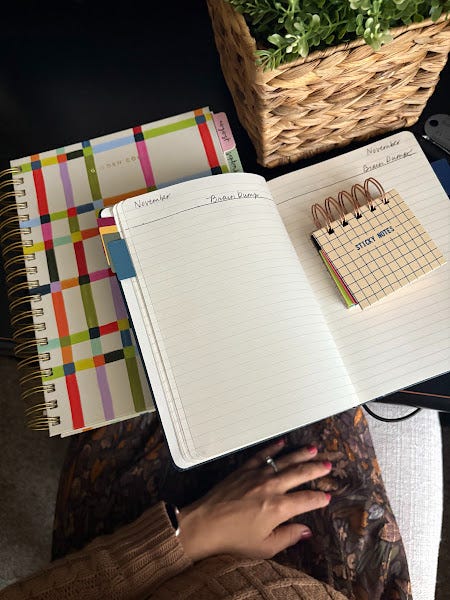



I'm also obsessed with notebooks, but I never really know how to organize them, and they always turned into chaotic scrambled brain hash. Your method is incredible, and seems so doable. Thank you for this, Lauren!!!
I love this prayer by St. Josemaria Escrivá 🙏